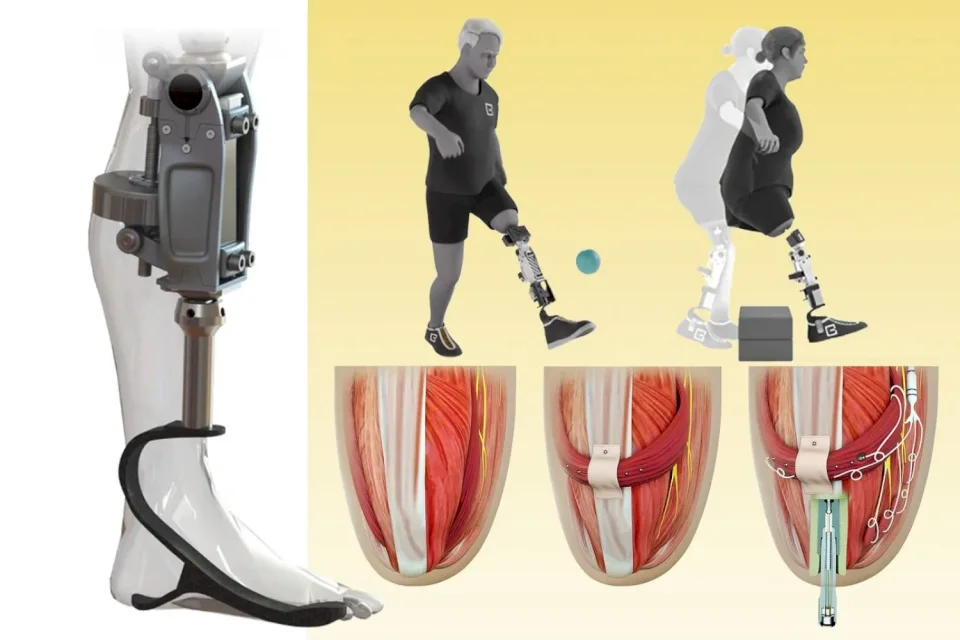
Prosthetic Knee Gives Amputees Natural Control
SadaNews - Researchers from the Massachusetts Institute of Technology (MIT) in the United States have announced the development of a new prosthetic knee system capable of restoring natural movement and precise control for individuals who have undergone above-knee amputations.
The researchers explained that the new system has helped amputees walk at a faster pace, climb stairs, and avoid obstacles, with greater efficiency than traditional prosthetics. The results were published on Thursday in the journal "Science."
Unlike traditional prosthetics that rely on placing the remaining limb inside a plastic socket, the new system integrates the prosthetic knee directly with the muscles and bones of the user's remaining limb. This integration provides better mechanical stability and grants the user greater control over the movement of the prosthetic limb, along with an increased sensation that the limb is a real part of their body.
The research team stated that they based the development of this system on advanced surgical techniques that reconnect the remaining muscles in a way that allows them to dynamically communicate with each other, restoring the sense of the position and movement of the limb lost after amputation.
To enhance performance, the team developed another technology known as (e-OPRA), which involves inserting a titanium rod into the remaining femur at the amputation site. This system features 16 wires that transmit nerve signals accurately through implanted electrodes on the muscles.
These signals are sent to an advanced robotic control unit that calculates the necessary force and torque to move the prosthetic limb according to the user's intent, providing smoother and more responsive movement.
The technology was tested on two groups: the first used the new system, while the second group utilized traditional prosthetics.
The results showed that users of the new system excelled in performing tasks such as bending the knee at specific angles, climbing stairs, and overcoming obstacles, with significantly better control compared to the other groups.
The tests not only measured movement but also included assessments of the participants' feelings of how integrated the prosthetic limb was with their bodies. Users of the new system reported increasing feelings of control and belonging to the limb, which researchers described as a rise in "self-embodiment."
The researchers confirmed that this system represents a qualitative leap; it is not just a smart device but an integral part of the human body.
They added that even the most advanced artificial intelligence systems cannot provide a human with this complete sense of belonging to a prosthetic limb unless it is physically integrated with the tissues and bones of the body.
This technology is currently being routinely applied with below-knee amputees at Brigham and Women’s Hospital in the United States, and researchers anticipate that it will soon be adopted for above-knee amputation cases as well after completing the necessary clinical trials.

Apple and Google Send Notifications About Cyber Threats to Users in Over 150 Countries

Brain Chip Enables Patients to Move Robotic Limbs with Just Thought

OpenAI Founder Aiming to Establish Rocket Company to Compete with Musk in Space

Used by Cleopatra to Brighten Her Eye Whites... What Are the Health Benefits of Castor Oil...

Marketed for recovery from injuries and muscle building... What are the side effects of pe...

From Black to White... 8 Types of Tea That Help with Weight Loss and Fat Burning

New Test Reveals Bladder Cancer with High Accuracy

